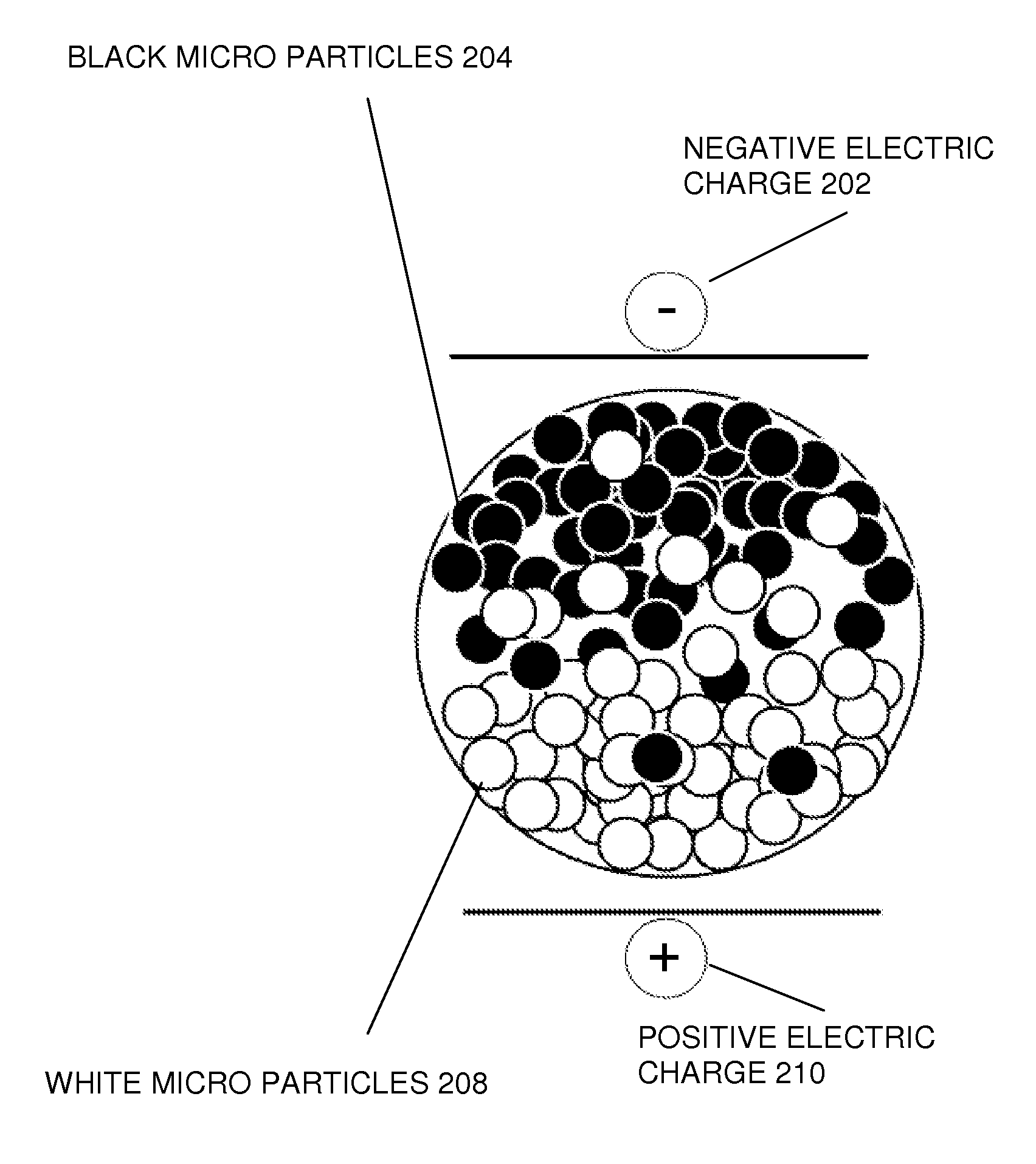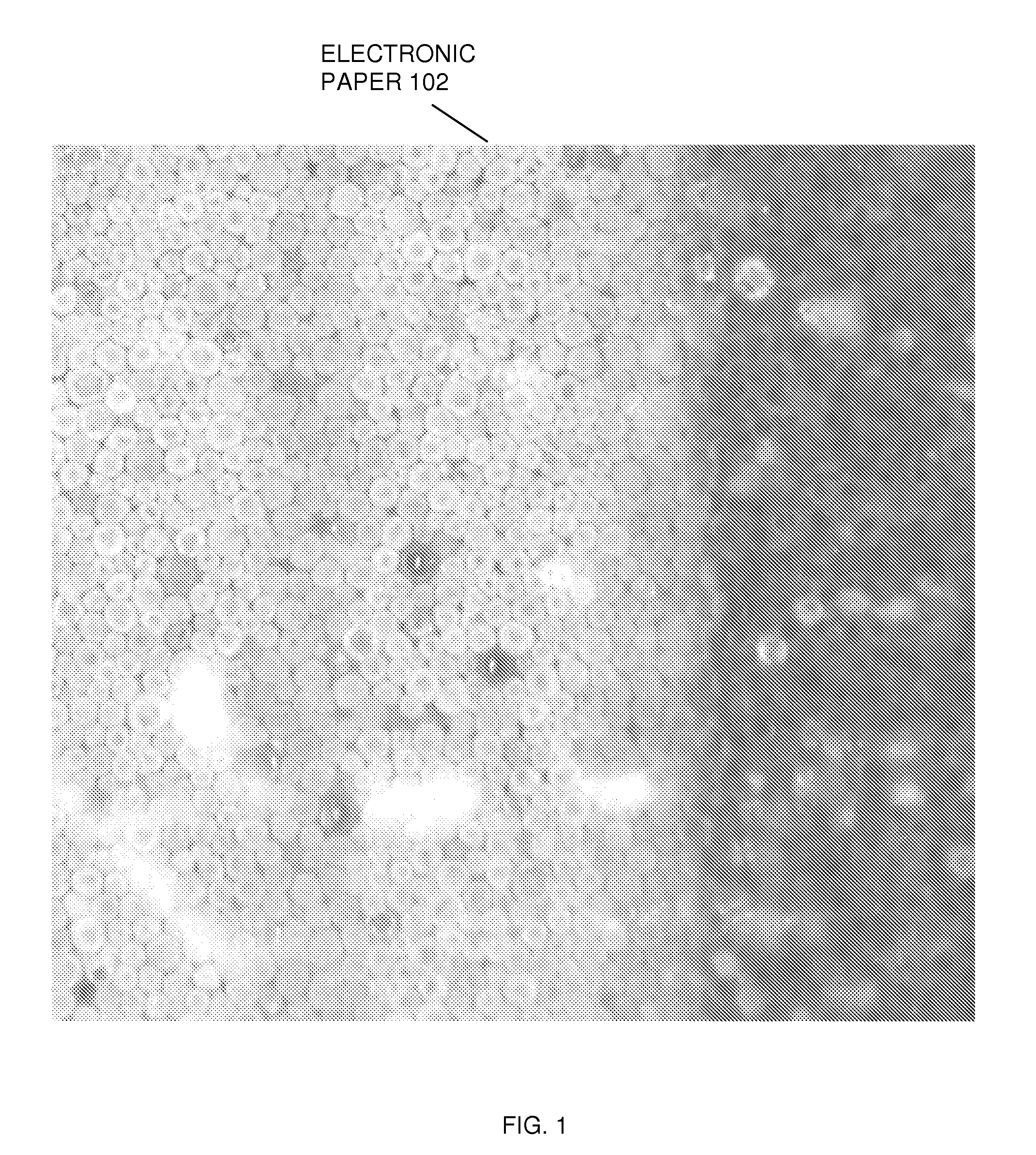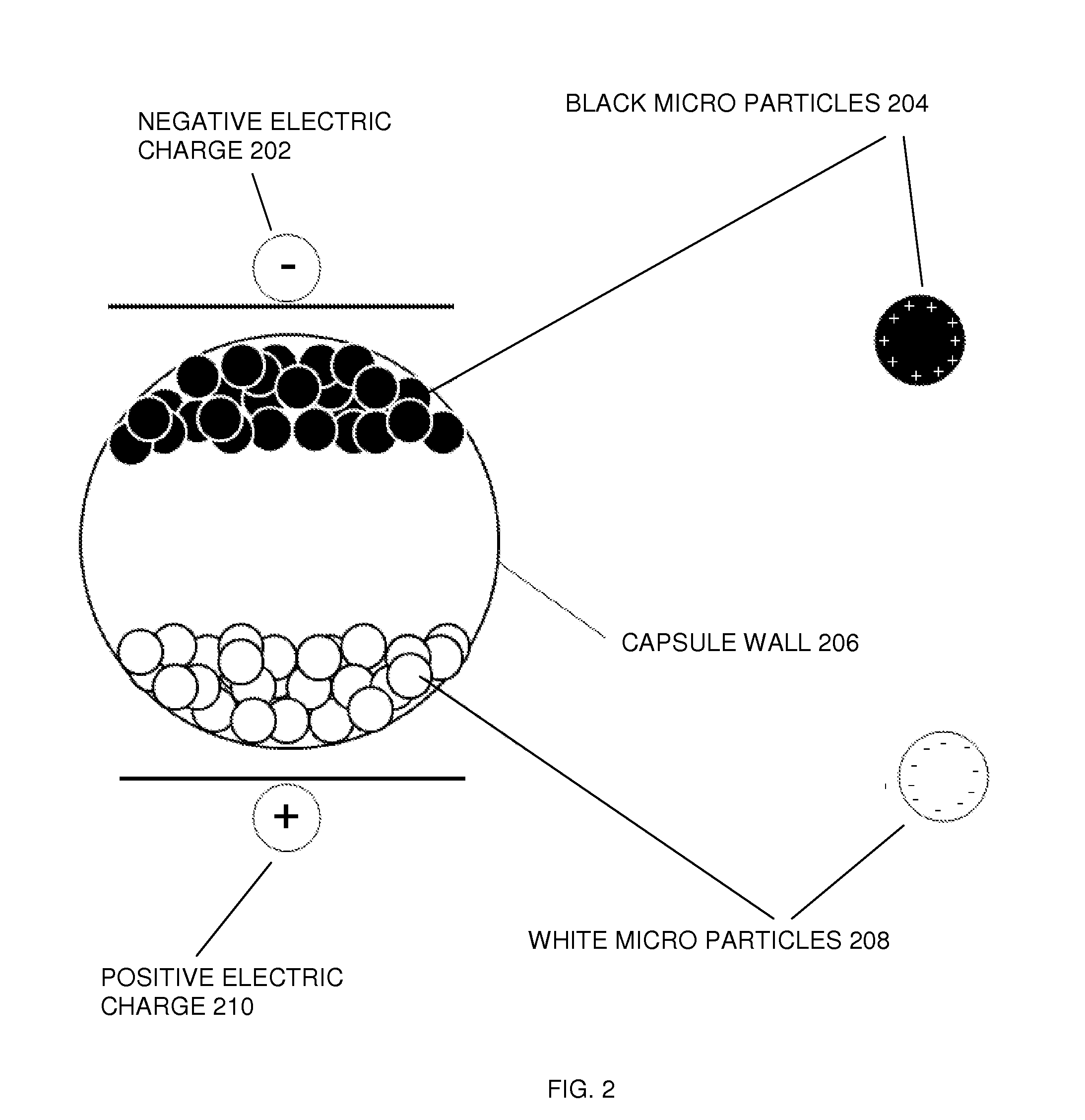Apparatus systems and methods of sensing chemical bio-chemical and radiological agents using electrophoretic displays
a technology of electrophoretic display and chemical biochemical, applied in the direction of instruments, beam/ray focussing/reflecting arrangements, dosimeters, etc., can solve the problem of non-optimized electronic paper being sensitive to high-energy radiation
- Summary
- Abstract
- Description
- Claims
- Application Information
AI Technical Summary
Benefits of technology
Problems solved by technology
Method used
Image
Examples
third embodiment
[0055] the general sensing schema, moving particles within the micro-container (such as the PDMS micro container 602), are applied to sensing biological and / or chemical agents. In order for the biological and / or chemical agents to react with the particles, a semipermeable membrane or container enclosure is needed. The semipermeable membrane also adds additional selectivity.
[0056]Furthermore, the mobility of the particles within the micro-container is a function of the zeta potential. Sensing can also be accomplished by modifying the zeta potential, e.g. change in pH value, ion concentration change.
[0057]Additionally, the detection sensitivity can be estimated for chemical agents, as follows: Organophosphate (OP) compounds are significant environmental and food chain pollutants because they are used intensively as pesticides, insecticides, and chemical-warfare agents. OP can react with functionalized carbon particles in a two electron reaction, according to G. Liu, Y. Lin “Electroche...
first embodiment
[0058] a method 800 of detecting, sensing and indicating exposure to a high energy ionizing radiation, (on and / or using) an electrophoretic display 302 having an electronic paper 102 is disclosed herein. The electronic paper 102 contains a plurality of transparent micro-containers, and residing in the plurality of transparent micro-containers are a plurality of positively charged black particles, such as black micro particles 204 and a plurality of negatively charged white particles, such as white micro particles 208. The visual appearance of the electronic paper 102 depends on a position of the plurality of charged particles, where the different charged particles are made of at least two different types of semiconducting materials having oppositely charged states. The size of the charged particles ranges from about 200 nm up to about 5 micrometers.
[0059]Referring to FIG. 8 and FIG. 3, and according to the first exemplary embodiment, at an operation “start”802 (hereafter “the operat...
second embodiment
[0067]Referring to FIG. 1, FIG. 6A, FIG. 6B, and FIG. 9, a method 900 of detecting, sensing and indicating an exposure to a plurality of bio-chemical agents involving charge transfer, (on and / or using) an electrophoretic display having electronic paper, is disclosed herein. The electronic paper 102 contains a plurality of microcontainers such as the PDMS micro container 602, and the plurality of microcontainers have and / or can be a plurality of transparent semipermeable membrane micro-sphere enclosures. Residing in the plurality of transparent semipermeable membrane micro-sphere enclosures are a plurality of positively charged functionalized black carbon particles and a dielectric colloidal fluid. This fluid can be a solution formed by the plurality of charged particles. Furthermore, a visual appearance of the electronic paper depends on a position of the plurality of charged particles, the method of detecting, sensing and indicating the exposure to the plurality of bio-chemical ag...
PUM
| Property | Measurement | Unit |
|---|---|---|
| diameters | aaaaa | aaaaa |
| diameters | aaaaa | aaaaa |
| diameters | aaaaa | aaaaa |
Abstract
Description
Claims
Application Information
 Login to View More
Login to View More - R&D
- Intellectual Property
- Life Sciences
- Materials
- Tech Scout
- Unparalleled Data Quality
- Higher Quality Content
- 60% Fewer Hallucinations
Browse by: Latest US Patents, China's latest patents, Technical Efficacy Thesaurus, Application Domain, Technology Topic, Popular Technical Reports.
© 2025 PatSnap. All rights reserved.Legal|Privacy policy|Modern Slavery Act Transparency Statement|Sitemap|About US| Contact US: help@patsnap.com



